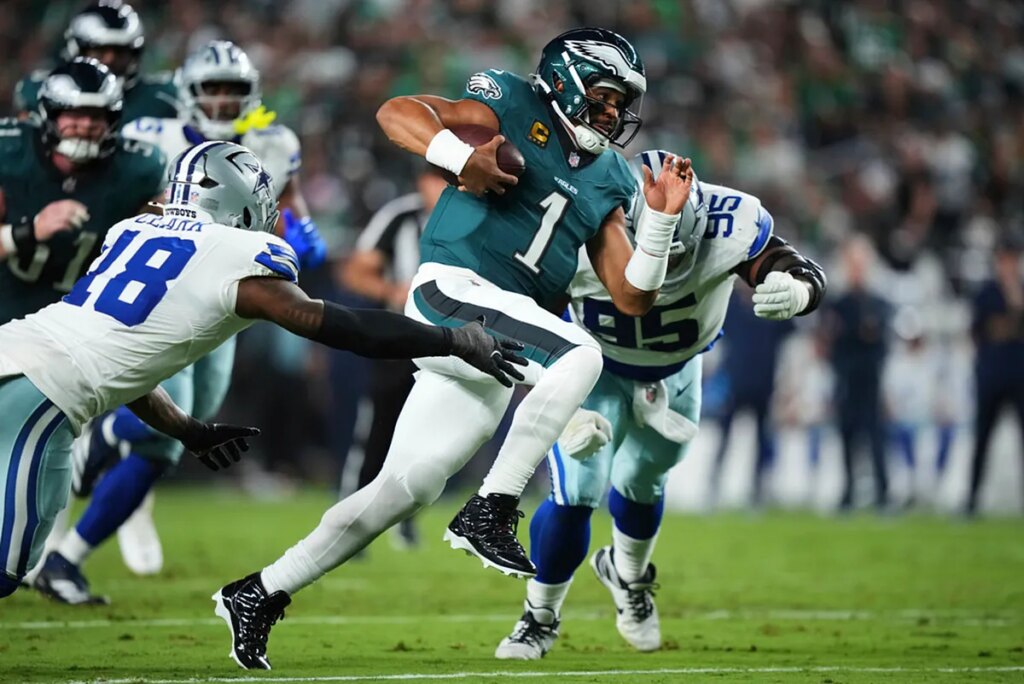The NFL is no stranger to sweeping rule debates played out in front of cameras and owners, but sometimes the most impactful adjustments happen with little fanfare.
That appears to be the case this year, after a subtle change to timeout regulations emerged not through a formal vote but buried within the latest edition of the league’s rulebook.
For decades, coaches have lived with a quirky safety net: if they tried to call a timeout while out of timeouts, or attempted to request a second timeout during the same dead-ball period, officials were instructed to ignore the plea.
It was embarrassing, sure, but not costly unless an official mistakenly granted the request, only then would a penalty be enforced.
That margin for error is gone. Now, simply attempting to call an extra timeout results in an automatic five-yard penalty for delay of game.
And if a team tries to request a second timeout in the same dead-ball period, not only will the penalty be assessed, but the timeout will also be officially charged.
The change didn’t come from a high-profile vote at the annual owners’ meetings. Instead, it was introduced as what insiders call a “back of the book” revision, part of a batch of quiet updates compiled by the Competition Committee.
Teams were informed before the start of the season, but the first public glimpse appeared when the updated rulebook was released.
On paper, five yards may not sound like much, but in tight game situations the difference could be enormous.
Consider a third-and-two in the red zone with seconds remaining, or a field goal attempt nudged just beyond a kicker’s range. A coach’s slip of the tongue or desperate ploy to ice an opponent could now directly shift momentum.
The timing also matters. With so many games decided by a single possession – 56% of contests in 2024 were within one score in the fourth quarter – penalties tied to clock management carry more weight than ever.
Coaches who once leaned on psychological tactics, like feigning an extra timeout to rattle a kicker, no longer have room for error.
A reflection of the Competition Committee’s power
The NFL’s Competition Committee has long had the authority to implement smaller changes without a vote from all 32 owners, but this update is a reminder of how quietly the game can evolve.
While fans often fixate on headline-grabbing topics like kickoff modifications or replay reviews, it’s these technical tweaks that sometimes have the most direct impact on what happens between the lines.
It also raises questions about transparency. Unlike rule changes debated at league meetings, these “back of the book” adjustments aren’t put to a public vote.
They simply appear, leaving teams to adjust. For coaches, that means one more detail to monitor in a league where the margins are already razor thin.
The reality for players and staff is simple: precision in timeout management is no longer optional. A casual request at the wrong time, once dismissed as harmless, is now a penalty waiting to happen.
With the pressure of late-game drives, sideline chaos, and roaring crowds, that’s easier said than done.
What it signals about the NFL
This isn’t just about clock management. It’s part of a broader trend: the NFL is tightening rules to maintain consistency and prevent games from being disrupted by loopholes or confusion.
From eliminating hip-drop tackles to redefining fair catches on kickoffs, the league is increasingly proactive in addressing issues before they spiral into controversy.
For fans, the change may not jump off the page, but when a five-yard penalty shifts the outcome of a drive in December or January, it will suddenly feel monumental.
And when a coach is asked why his team stalled out in the red zone, the answer might trace back to a rule change most people didn’t know existed.
Read the full article here











